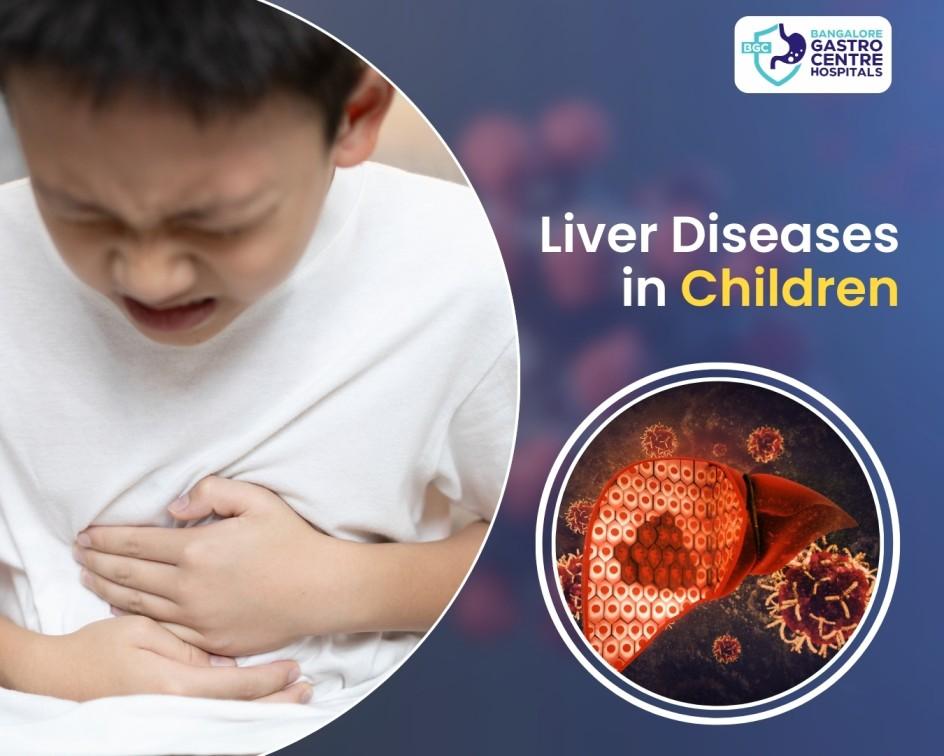
Liver Diseases in Children: Identifying the Signs Early
The liver is one of the most vital organs in the human body, responsible for digestion, metabolism, and detoxification. While liver diseases are often associated with adults, children are not immune to these conditions. Paediatric liver diseases can have serious consequences if left undiagnosed, making early detection crucial.
In India, the prevalence of paediatric liver diseases is rising. Studies indicate that metabolic dysfunction-associated steatosis liver disease (MASLD) affects nearly 35% of children, particularly those with obesity. Similarly, viral hepatitis and congenital liver disorders like biliary atresia are significant concerns. Understanding the early signs can lead to timely intervention and better health outcomes.
Understanding Liver Function in Children
The liver plays a crucial role in a child’s growth and overall health by aiding digestion, producing essential proteins, and filtering toxins. However, paediatric liver function differs from that of adults. Children have a developing immune system and metabolism, which can make them more vulnerable to liver-related complications.
Common Liver Diseases in Children
1. Metabolic Dysfunction-Associated Steatosis Liver Disease (MASLD)
- Prevalence: A study by AIIMS found that 35% of Indian children with obesity have MASLD.
- Causes: Linked to obesity, insulin resistance, and metabolic syndrome.
- Symptoms: Often asymptomatic but can cause fatigue, abdominal discomfort, and liver inflammation.
- Diagnosis: Liver function tests, ultrasound, and Fibro Scan (a non-invasive method for assessing liver stiffness).
- Treatment: Lifestyle changes, including a balanced diet and regular exercise.
2. Hepatitis (A, B, C, and E)
- Causes: Viral infections, contaminated food/water, and mother-to-child transmission (for Hep B & C).
- Symptoms: Jaundice, nausea, fever, dark urine.
- Diagnosis: Blood tests, and liver biopsy in chronic cases.
- Treatment: Supportive care for Hep A & E; antiviral therapy for Hep B & C.
- Prevention: Vaccination (Hepatitis A & B) and hygiene practices.
- Government Initiative: The National Viral Hepatitis Control Program in India aims to eliminate viral hepatitis as a public health threat.
3. Biliary Atresia
- Definition: A congenital condition where bile ducts are blocked or absent.
- Symptoms: Persistent jaundice, pale stools, dark urine, and poor weight gain.
- Diagnosis: Blood tests, imaging (ultrasound, MRI), and liver biopsy.
- Treatment: Surgery (Kasai procedure) or liver transplant in severe cases.
4. Wilson’s Disease
- Cause: A rare genetic disorder leading to copper accumulation in the liver.
- Symptoms: Liver dysfunction, neurological symptoms, and behavioural changes.
- Diagnosis: Blood and urine tests, liver biopsy, genetic testing.
- Treatment: Lifelong medications to remove excess copper and dietary modifications.
5. Autoimmune Liver Diseases (Autoimmune Hepatitis, Primary Sclerosing Cholangitis)
- Causes: Immune system mistakenly attacking liver cells.
- Symptoms: Jaundice, fatigue, abdominal pain, itching.
- Diagnosis: Autoimmune markers, liver biopsy.
- Treatment: Immunosuppressive therapy, and in severe cases, a liver transplant.
Read more about: 6 Early Signs That Your Child Needs a Gastrointestinal Specialist
Recognizing the Early Signs of Liver Diseases in Children
Parents should be vigilant for the following symptoms:
- Persistent jaundice
- Abdominal pain or swelling
- Unexplained fatigue and weakness
- Nausea, vomiting, loss of appetite
- Dark urine, pale stools
- Growth failure and developmental delays
If these symptoms persist, consulting a paediatric gastroenterologist is essential for early diagnosis and intervention.
Diagnosis and Advanced Screening for Paediatric Liver Diseases
Timely screening can prevent complications. Key diagnostic methods include:
- Blood Tests: Liver function tests (LFTs), viral markers, autoimmune tests.
- Imaging Techniques: Ultrasound, MRCP (for biliary conditions).
- Non-Invasive Fibrosis Assessment: Fibro Scan for liver stiffness measurement.
- Liver Biopsy: Reserved for complex cases where deeper analysis is needed.
Treatment Approaches and Management
Diet and Lifestyle Modifications
- A well-balanced diet with limited processed foods.
- Weight management to reduce MASLD risk.
- Avoiding hepatotoxic medications.
Medical Interventions
- Antivirals for hepatitis.
- Immunosuppressants for autoimmune liver diseases.
- Chelation therapy for Wilson’s disease.
Surgical Options
- Kasai Procedure: Used for biliary atresia to restore bile flow.
- Liver Transplant: Required for end-stage liver disease.
Preventing Liver Diseases in Children
Prevention is always better than cure. Steps to protect liver health include:
- Vaccination: Ensure children receive Hepatitis A & B vaccines.
- Hygiene and Sanitation: Handwashing and safe food consumption to prevent viral hepatitis.
- Early Screening: Children at high risk (obesity, genetic predisposition) should undergo regular liver check-ups.
- Parental Awareness: Educating families about nutrition and healthy liver practices.
Conclusion
Liver diseases in children can be life-altering, but early detection and proactive management can lead to better outcomes. Recognizing warning signs, seeking timely medical intervention, and following preventive measures are essential for maintaining a child’s liver health.
Regular paediatric gastroenterologist consultations, particularly for high-risk children, can ensure early diagnosis and effective treatment. By raising awareness and adopting healthier lifestyle habits, we can work towards reducing the burden of paediatric liver diseases in India.
